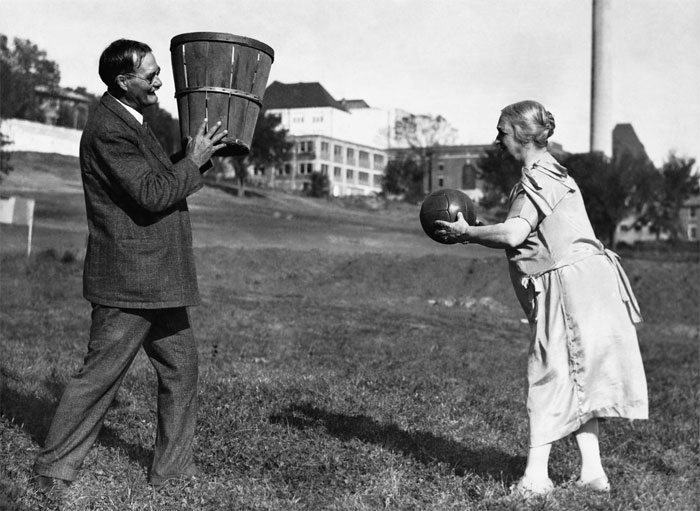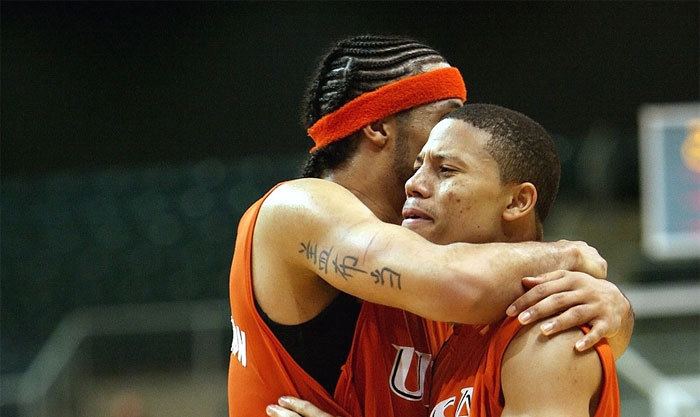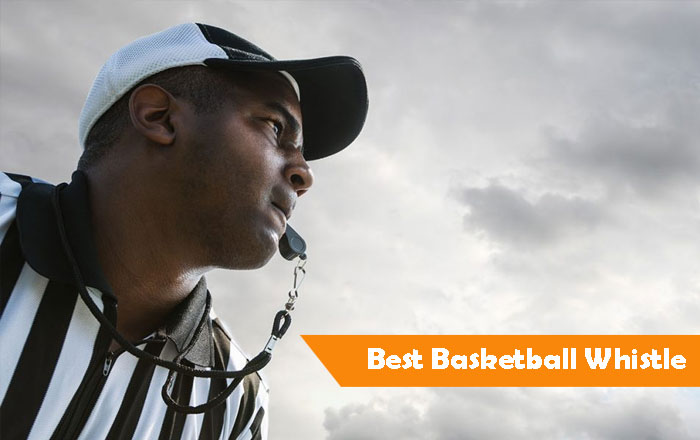Basketball is one of the most popular team sports globally, and it doesn’t require a lot of equipment – all you need is a ball and a hoop.
You can play inside or outside for casual games by yourself or with a team of other players. Professional matches, on the other hand, follow a stricter set of guidelines.
Here’s a breakdown of the equipment you might see during a game of basketball.
Equipment Needed for Basketball
The General Court Equipment
Court
Basketball courts typically have wood floors, with planks that run in a lengthwise direction. Many also have the home team’s name and logo painted on or around the center circle.
The standard NBA court floor uses Acer saccharum or hard maple wood, as this variety is more durable than other hardwoods and features a lighter color.
The wood’s lightness contrasts with the basketball’s darker hue, making it easier for players to follow the ball’s movement. The glossy wood also reflects light better to help brighten up the arena.

The dimensions of a court for international games are 91.9 feet by 49.2 feet, while in the NCAA and NBA, it’s 94 feet by 50 feet.
Ball
The ball is one of the most crucial pieces of equipment in a basketball game, and it usually sports an orange color with rough textures and black contours.
The NBA and WNBA use balls made from 100% genuine full-grain leather, but they are costly and only suitable for indoor matches because they lack durability. However, they give the advantage of a better grip and softer feel.
You can find many high-quality balls made from rubber, synthetic material, or a combination of the two for casual games. These balls last a lot longer, and you can use them even on rougher, outdoor courts without damaging them.
The basketball’s size has specific regulations for professional matches. For men, balls need to weigh 22 ounces, with a circumference of 29.5 inches. Women’s games use a smaller, lighter model of 28.5 inches and 20 ounces.
Basket
The basket is a horizontal circular metal rim with a net on top of a pole. Half-court games only need one hoop, while full courts require two hoops.

The top of the rim needs to be ten feet above the court and four feet inside the baseline for almost every competition level. The basket’s height follows an exact standard because a rim with incorrect dimensions can heavily hamper a player’s shooting.
The net typically contains between 30-thread and 120-thread cords, and it’s designed so that it slows down or “checks” the ball before it completely passes through the basket.
The checking helps with the visual confirmation of a ball going through, and it also slows down the ball, so it doesn’t rebound too far or too fast.
Backboard
Backboards are flat, vertical boards placed behind the rim, and they help give balls a better rebound.
Most professional settings use a shatter-resistant Plexiglass or tempered glass board, but some can have polycarbonate or acrylic material. They also have a regulation size of 6 feet in width and 3.5 feet in height.
Scoreboard
Scoreboards display the remaining time and the running scores for both teams, and they can either be digital or manual. These indicators also show the team fouls, which are in the same position as a hockey scoreboard’s “shots on goal.”
Shot Clock and Game Clock
Timekeepers operate the shot clock and game clock. The game clock records a game’s overall time while the shot clock counts down from 24 seconds.
The offensive team has a 24-second time limit to have the ball in hand before shooting.
If they fail to shoot, the other team gets the ball and has 24 seconds to take a shot. This approach helps prevent running down the clock or slowing down the game’s action.
The Player’s Equipment
Jerseys
You can wear whatever’s comfortable for casual games, but professional players need to don their jerseys. These tops have the essential function of identifying a player’s number and team.
During a match, the NBA can fine players if their uniform doesn’t comply with the league’s rules.
Basketball Shoes
Basketball shoes have a specific design that matches the game’s intensity. These shoes absorb shock, stabilize the ankle, and have enough flexibility to allow players to move more freely.

What’s more, they also need to feel comfortable throughout a game to maintain high traction on the court. Because of these features, basketball shoes tend to be bulkier than the typical running shoe.
Socks
Socks can enhance a player’s performance by keeping their feet dry and comfortable. Good socks also reduce the friction created between the foot and the shoe to prevent blisters.
Here are some of the best socks for basketball players.
Headbands
Headbands are another optional piece of equipment meant to absorb sweat dripping from the forehead. Most have a thick, terry cloth material that absorbs moisture quickly.
You might also like: Best Basketball Headbands for that Cool and Sweatless Look

Compression Sleeves
Another optional piece of equipment that many professionals wear are compression sleeves. They help muscles recover from strenuous activity by causing the blood flow to circulate much faster.
Players may wear them around their shooting arm to improve flexibility, regulate temperature, and add compression to reduce soreness.
Compression sleeves can also come in the form of leggings. These pants often have targeted support to stabilize vulnerable areas like the calves and knees.
The Official’s Equipment
Official’s Uniform
The colors used by basketball officials vary depending on their respective governing bodies. Those in American high school and college basketball wear white and black striped shirts with black pants and black shoes.
NBA officials wear gray shirts with black pants and black shoes, while FIBA officials don gray and black shirts with black trousers, socks, and shoes.
Whistle
Every official wears a whistle for stopping a play due to a violation or foul on the court. They often use hand signals to indicate the kind of infraction or to administer a game.
Scorebook
Scorekeepers write in a scorebook to list down a match’s statistics, including a summary of the game, the players’ names, jersey numbers and positions, specific details of each quarter, and more.

